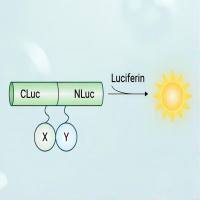Fluorescence Lifetime-Based Optical Molecular Imaging
互联网
互联网
相关产品推荐

GLU-1D-1D/GLU-1D-1D蛋白/GLU-D1-1B蛋白/Recombinant Triticum aestivum Glutenin, high molecular weight subunit DX5 (GLU-1D-1D), partial重组蛋白
¥69

商业青铜标准光辐射和X射线光谱分析;Commercial Bronze Standard for Optical Emission and X-ray Spectroscopic Analysis
¥650

SIRPA/SIRPA蛋白Recombinant Human Tyrosine-protein phosphatase non-receptor type substrate 1 (SIRPA)重组蛋白Brain Ig-like molecule with tyrosine-based activation motifs蛋白
¥1344

荧火素酶互补实验(Luciferase Complementation Assay, LCA)| 荧光素酶互补成像技术(Luciferase Complementation Imaging, LCI)
¥5999

MUC5B/MUC5B蛋白Recombinant Human Mucin-5B (MUC5B)重组蛋白MUC-5B;Cervical mucin;High molecular weight salivary mucin MG1;Mucin-5 subtype B, tracheobronchial;Sublingual gland mucin蛋白
¥1836

